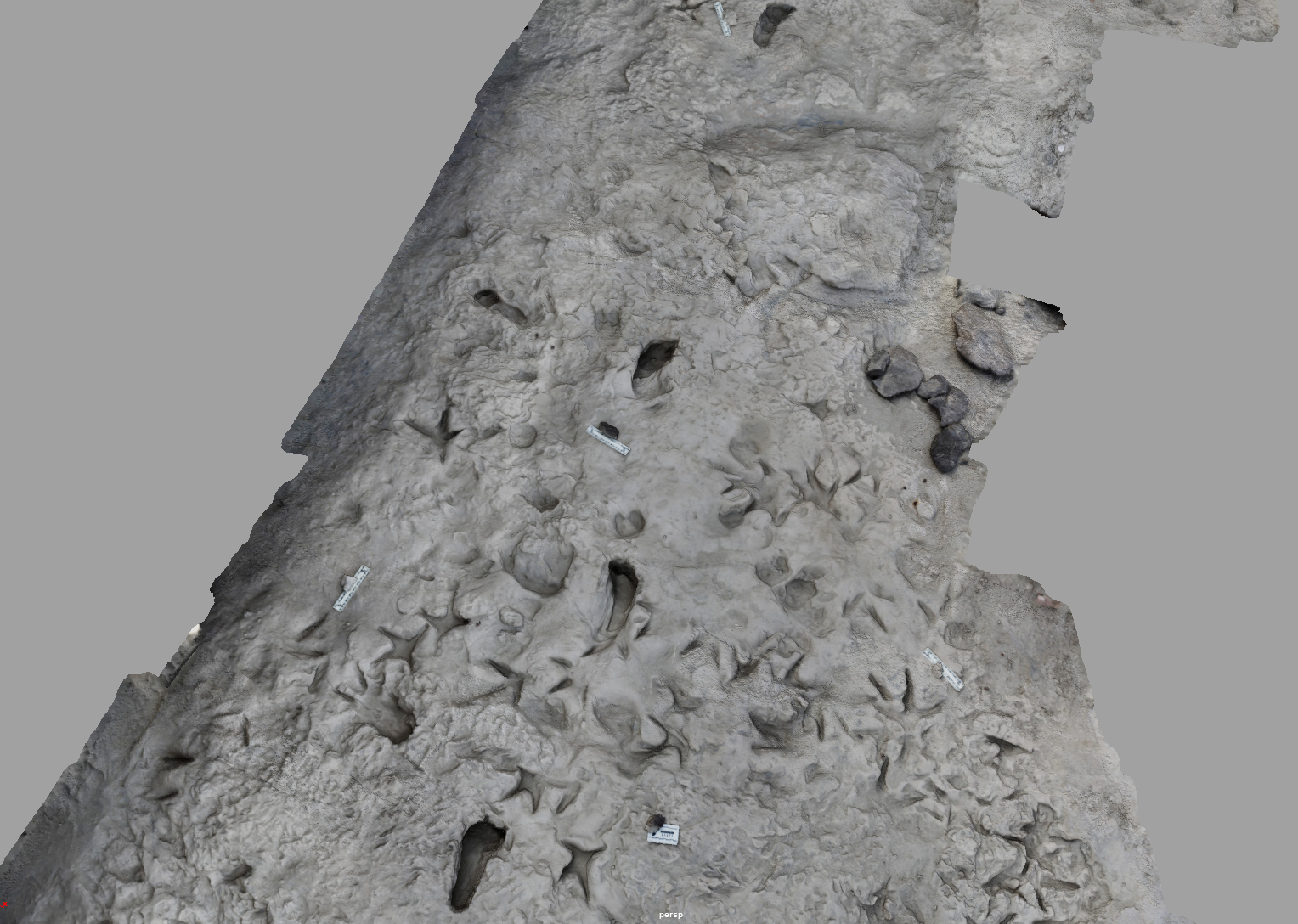For the first time ever, scientists have found direct evidence of multiple ancient hominins living in the same place at the same time. Such a discovery represents a huge step forward in our understanding of human evolution, as it indicates that the first ever truly human species shared its environment with one of our more primitive relatives.
They may not have waved hi as they walked by, but this is definitely two species that are moving through the same place and easily could have interacted.
Dr Neil T. Roach
What’s even more astounding is that the evidence doesn’t consist of bones or stone tools, but comes in the form of an incredibly well-preserved set of footprints from the shore of Lake Turkana in Kenya. Dated to around 1.5 million years ago, the prints belonged to the humanlike species Homo erectus and the more apelike Paranthropus boisei.
Speaking to IFLScience, study author Dr Neil T. Roach explained that depositional experiments indicated that the separate tracks were made “anywhere from hours to days” apart, confirming that the two species coexisted in their lakeside environment. “They may not have waved hi as they walked by, but this is definitely two species that are moving through the same place and easily could have interacted,” he said.
And while it’s true that the fossil record does suggest that the two ancient human relatives may have overlapped, the newly discovered prints add flesh to the bones of the story by painting a more detailed picture of how H. erectus and P. boisei knew each other.
“What the fossil record doesn’t do a great job with is showing where these individuals are in space when they’re alive, where they’re spending their time and what other individuals or species they’re interacting with,” said Roach.
“We’ve known that these species were there, but the fossil record covers 10,000 years, so you don’t have the same resolution [as the footprints provide],” he explained. “Until you have something that pins them down to just this place and just this time period of a couple of days, you can’t really assess what it is that they were doing in terms of their relationship to other things.”

A 3D model of the tracks made by H. erectus and P. boisei.
Image credit: Kevin Hatala/Chatham University
In addition to providing a richer snapshot of daily life for these Pleistocene hominins, the new discovery also helps to tell the story of how bipedalism – or walking on two legs – evolved in the human lineage. According to the study authors, the findings reveal that the trait did not emerge in a neat, linear fashion, but appeared in multiple different forms that overlapped in time.
“In the tracks that we attribute to Homo erectus, we see footprints that look a lot like ours,” said Roach. “They look like they have stiff feet, and as they step in things, they use their heel first, and then they sort of push off on their toes.”
Anthropologists think it’s this walking style that enabled H. erectus to travel across larger distances than any of its predecessors, becoming the first hominin to migrate out of Africa, eventually reaching all the way to the Far East.
Describing the P. boisei prints, Roach said, “We see a track that’s much more flat-footed, so it looks a bit like an intermediate between a chimpanzee and a human foot, but they’re not pushing off with their toes in the same way.”
“This tells us that there’s multiple forms of walking bipedally that are around at the same time, and that for some species, the efficiency that might come out of pushing off your toes is important while for others it doesn’t seem to matter as much.”
It may be that we need to rethink how it is that our genus came to be.
Dr Neil T. Roach
While these astonishing footprints answer a number of long-standing questions regarding the ways in which our ancient relatives interacted with one another and their environment, Roach said the findings also raise several new conundrums.
For instance, due to significant differences in the two species’ diets, the researchers think H. erectus and P. boisei probably didn’t compete with one another for resources, but both exploited the lake and its ecosystem to meet their own material needs.
Yet if the two species shared the same habitat at the same time but weren’t in competition with one another, then what was the trigger that set the Homo genus off in a different evolutionary direction to that of Paranthropus and other early hominins?
“It may be that we need to rethink how it is that our genus came to be, if that competition was not an explanatory idea,” said Roach.
The study is published in the journal Science.
Source Link: 1.5-Million-Year-Old Footprints Suggest Two Ancient Human Relatives Walked Together